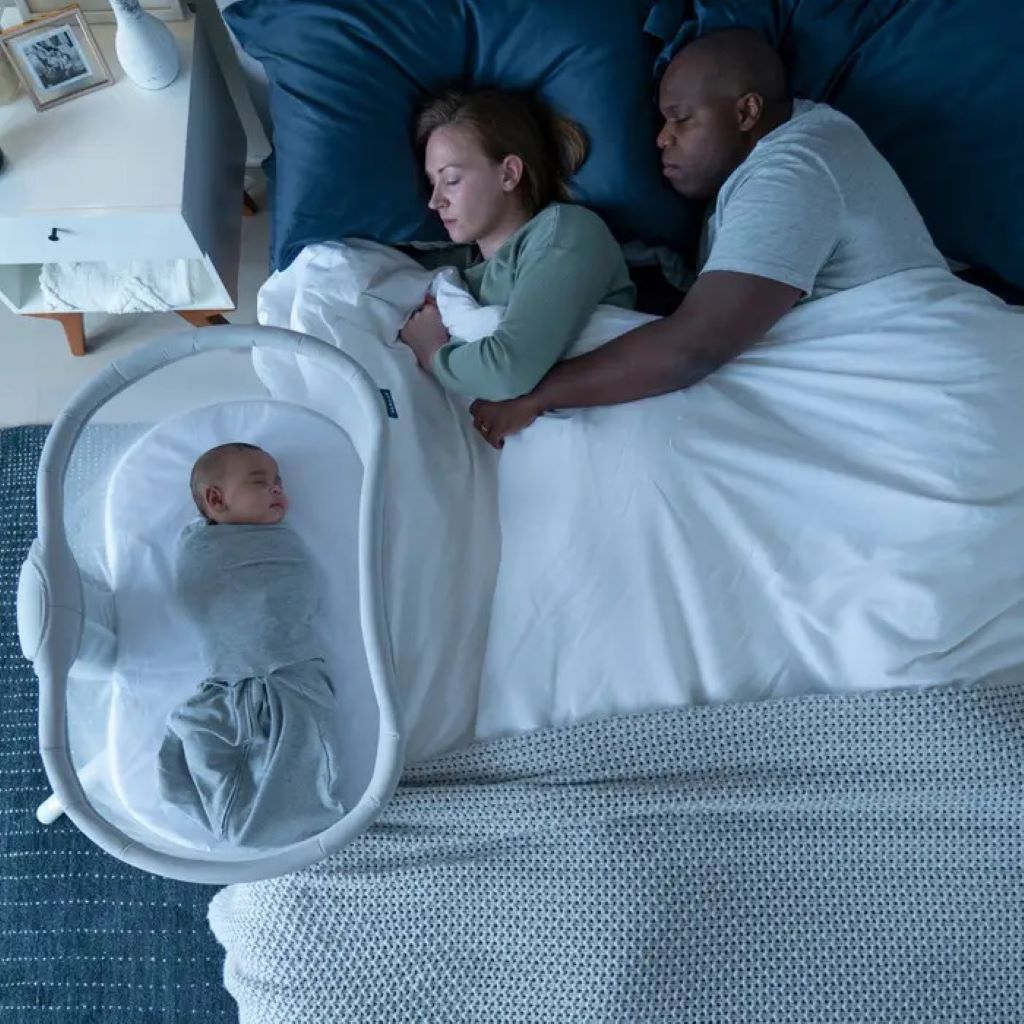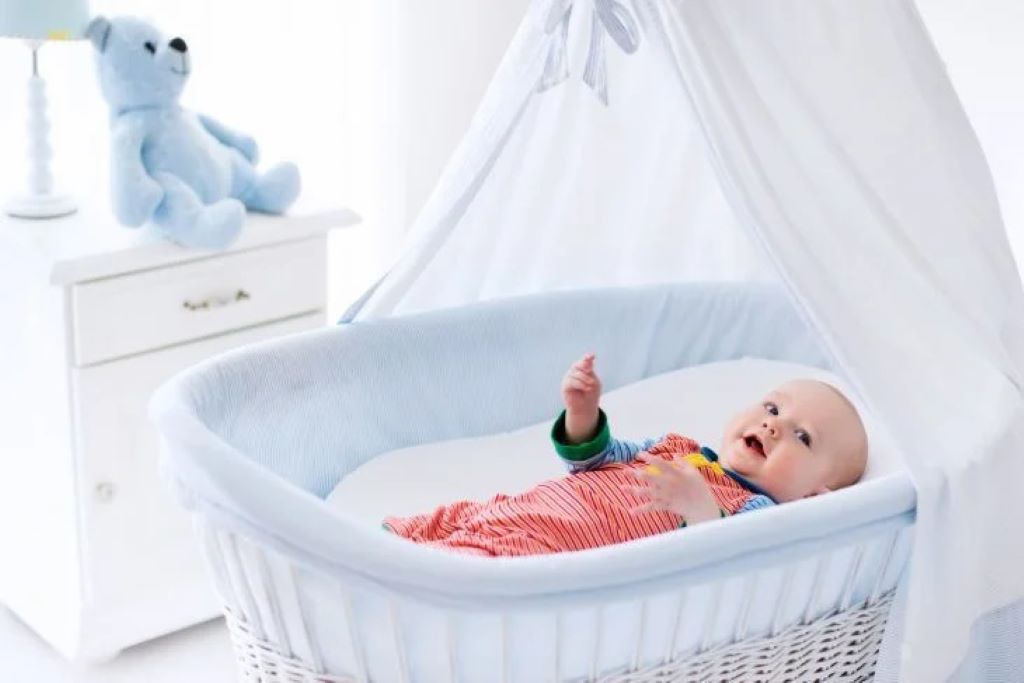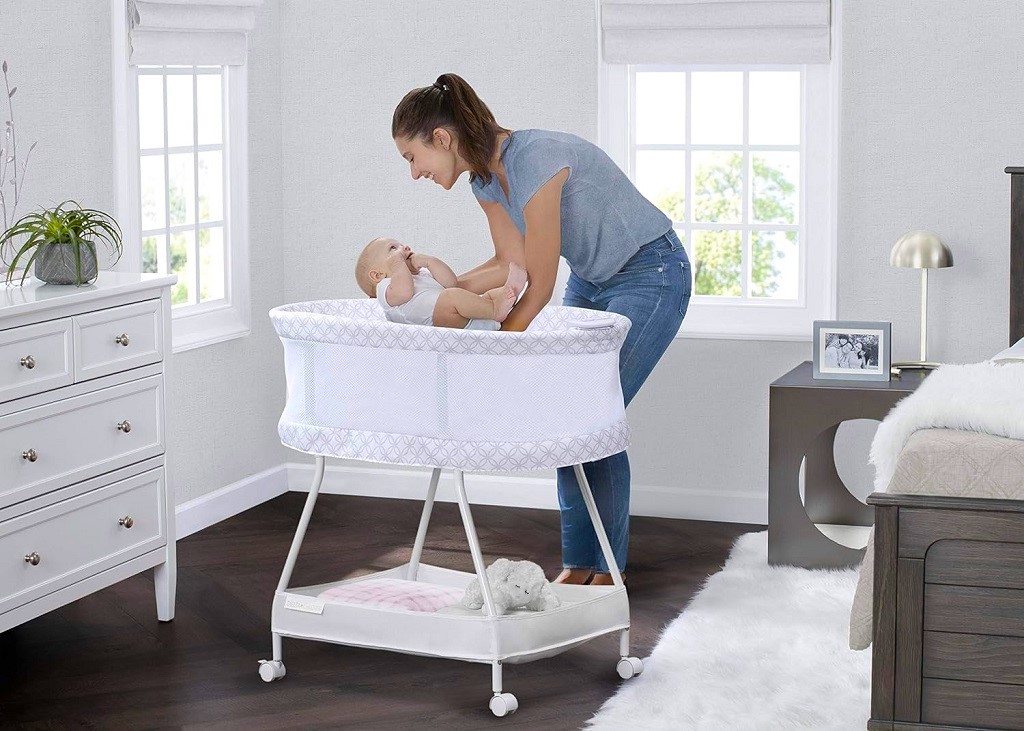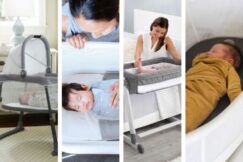Choosing the right bassinet is a crucial decision for new parents. It’s a place where your baby will spend a significant amount of time in their early months, so it’s important to choose one that is safe, comfortable, and convenient for both you and your baby. Two popular options are rolling and stationary bassinets. Each type has its own unique set of pros and cons.
Understanding Rolling Bassinets
Rolling bassinets are designed with wheels that allow you to easily move them from room to room. This feature is particularly handy for parents who want to keep their baby close by during the day, whether they are cooking in the kitchen, working in the home office, or relaxing in the living room. Some rolling bassinets also come with locking mechanisms to keep them stationary when needed.
Pros of Rolling Bassinets
- Portability: The most obvious advantage of rolling bassinets is their portability. You can effortlessly move your baby around without disturbing their sleep.
- Convenience: Rolling bassinets can make nighttime feedings and diaper changes more convenient, as you can bring your baby to your bedside without getting out of bed.
- Versatility: Some rolling bassinets come with additional features like storage baskets, bassinets that convert to play yards, and even rocking or vibrating functions to soothe your baby.
Cons of Rolling Bassinets
- Stability: While most rolling bassinets have locking mechanisms, they may not be as stable as stationary bassinets, especially on uneven surfaces.
- Safety: It’s important to ensure the wheels are locked when the bassinet is not in motion to prevent accidental rolling.
- Size and Weight: Rolling bassinets tend to be bulkier and heavier than stationary ones, which can be a consideration if you have limited space.
Understanding Stationary Bassinets

Stationary bassinets are designed to stay in one place. They are typically lighter and more compact than rolling bassinets, making them a good option for smaller spaces. Some stationary bassinets come with rocking or gliding motions to help soothe your baby to sleep.
Pros of Stationary Bassinets
- Stability: Stationary bassinets are generally more stable than rolling ones, reducing the risk of tipping.
- Safety: Without wheels, there’s no risk of accidental rolling, making them a safer option for some parents.
- Size and Weight: Their compact size and lighter weight make them easier to move around when necessary, although not as effortlessly as rolling bassinets.
Cons of Stationary Bassinets
- Less Portability: The most obvious drawback is their lack of portability. They are not designed to be moved around as easily as rolling bassinets.
- Convenience: If you want to keep your baby close by during the day, you’ll need to physically carry the bassinet or move your baby to a different location.
- Limited Features: Stationary bassinets typically have fewer features than rolling ones.
Related: Halo Baby Bassinet: The Ultimate Comfort for Your Little One
Which is Right for Your Baby?
Choosing between a rolling and stationary bassinet depends on your individual needs and preferences. Consider the following factors when making your decision:
- Lifestyle: If you plan to move your baby around frequently during the day, a rolling bassinet might be more convenient. If you prefer to keep your baby in one room, a stationary bassinet might be sufficient.
- Space: If you have limited space, a compact stationary bassinet might be a better choice. If space is not an issue, you might appreciate the extra features and portability of a rolling bassinet.
- Safety: If safety is your top priority, a stationary bassinet might be a safer option due to its lack of wheels.
- Budget: Rolling bassinets tend to be more expensive than stationary ones.
Important Safety Considerations
Regardless of the type of bassinet you choose, always follow safe sleep guidelines to reduce the risk of Sudden Infant Death Syndrome (SIDS):
- Place your baby on their back to sleep.
- Use a firm, flat mattress with a fitted sheet.
- Keep the bassinet free of loose blankets, pillows, and toys.
- Never leave your baby unattended in the bassinet.
In conclusion, both rolling and stationary bassinets have their own unique advantages and disadvantages. It’s important to weigh these factors carefully and choose the one that best suits your needs and preferences. Always prioritize safety and follow safe sleep guidelines to ensure your baby’s well-being.




